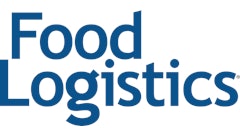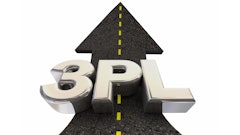
Tariffs have rapidly evolved from theoretical policy discussions to concrete financial challenges demanding immediate attention. For manufacturers and distributors navigating uncertain markets, these shifting trade costs directly impact pricing decisions and profitability margins. Successful companies are responding by developing dynamic pricing models that can quickly adapt to tariff changes while preserving customer relationships and competitive positioning.
The new reality of tariff volatility
The days of predictable, stable international trade are behind us. Recent months under the trump administration have seen aggressive implementation of tariffs, creating a ripple effect throughout global supply chains. With minimum 10% tariff on all imports to the US and auto import duties of 25%, threats of increased tariffs on trading partners, and continuing tensions with major manufacturing nations, the only certainty is uncertainty.
This volatility creates significant challenges:
· Compressed margins as input costs rise overnight
· Supply chain disruptions as businesses reconsider their global footprint
· Pricing strategy conflicts when external costs clash with established pricing models
· Customer relationship strain when price increases must be implemented
For manufacturers and distributors who operate on traditionally thin margins, the stakes couldn't be higher. Each percentage point of a tariff directly threatens profitability unless strategies adapt accordingly.
The pricing strategy dilemma
Most businesses fall somewhere on the spectrum between cost-based and value-based pricing. Cost-plus models simply add a markup to total costs, while value-based approaches price according to customer-perceived benefits. Tariffs fundamentally challenge both paradigms.
Consider this scenario: A manufacturer produces components using imported steel. When a 25% tariff hits, the core product hasn't improved or changed—its value to customers remains the same—yet costs have spiked significantly. Purely value-based pricing would suggest prices shouldn't change, but absorbing such costs would devastate profitability.
This conflict forces a critical question: How do you maintain pricing integrity while protecting margins against external cost surges?
Surcharges vs. direct price increases
When tariffs strike, businesses typically respond in one of two ways:
1. Direct price increases maintain simplicity—one price, clearly communicated. However, these increases can mask the reason behind the change, making it difficult to adjust pricing downward if tariffs are later removed.
2. Surcharges separate the core product price from tariff-related costs, creating transparency and flexibility. They signal the temporary nature of the increase and preserve value-based pricing for the core offering. When the tariff disappears, so can the surcharge, without renegotiating base pricing.
The optimal approach depends on several factors:
· Contract structure: Do existing agreements allow for surcharges or price adjustments?
· System capabilities: Can your ERP handle separate surcharge line items?
· Customer sophistication: Will customers understand the reasoning behind surcharges?
· Competitive landscape: What approach are your competitors taking?
Strategic implementation for manufacturers and distributors
Manufacturers and distributors occupy a precarious middle position in the supply chain—buying from suppliers who may pass on tariff costs and selling to customers who resist price increases. This position requires a particularly thoughtful strategy:
1. Assess tariff exposure
Map your supply chain to identify which products contain tariff-impacted materials. Calculate the precise cost impact by product line to avoid over or under-adjusting prices. For distributors handling thousands of SKUs, technology solutions may be needed to track tariff impacts across the portfolio.
2. Segment your response
Not all customers and products should be treated identically. Consider:
· Implementing surcharges for highly differentiated products where you maintain pricing power
· Strategically absorbing costs for competitive product lines where you're fighting for market share
· Protecting key account pricing while passing through costs to transactional customers
· Accelerating value-added services that aren't impacted by tariffs
3. Communicate with transparency
Whatever approach you choose, clear communication is essential. Provide advance notice of changes, explicitly link price adjustments to tariff implementation dates, and maintain consistency in your explanation across sales channels.
The most successful companies frame these discussions in terms of partnership: "We're facing these challenges together, and here's our approach to maintaining supply continuity while managing costs."
4. Build contractual flexibility
Future-proof agreements by including:
· Tariff adjustment clauses that specify how and when price changes will be implemented
· Index-based pricing mechanisms tied to specific cost inputs
· Clearly defined surcharge methodologies that can be activated when needed
5. Evaluate supply chain alternatives
Pricing strategy is just one response to tariffs. Simultaneously, explore:
· Alternative sourcing from non-tariffed countries
· Nearshoring or reshoring production
· Product redesigns that reduce dependence on tariffed materials
· Inventory strategies that provide buffer against short-term fluctuations
The strategic advantage of preparedness
While tariffs create challenges, they also provide opportunities for prepared organizations to differentiate themselves. Companies that develop agile pricing strategies, communicate transparently, and implement systems to manage tariff volatility gain competitive advantage during uncertain times.
The reality is that tariff volatility is likely to persist. Across administrations and through changing geopolitical landscapes, tariffs have become a standard tool of trade policy. Rather than hoping for stability to return, forward-thinking manufacturers and distributors are building flexibility and resilience into their pricing models.
By treating pricing strategy as a dynamic capability rather than a static policy, businesses can protect margins while maintaining customer relationships—turning potential disruption into strategic opportunity.
The future belongs to companies that embrace the new normal of tariff uncertainty with adaptive pricing strategies, clear communication, and supply chain flexibility. Those organizations will emerge stronger while their competitors struggle to adjust in a world where tariffs remain a constant commercial reality.




















